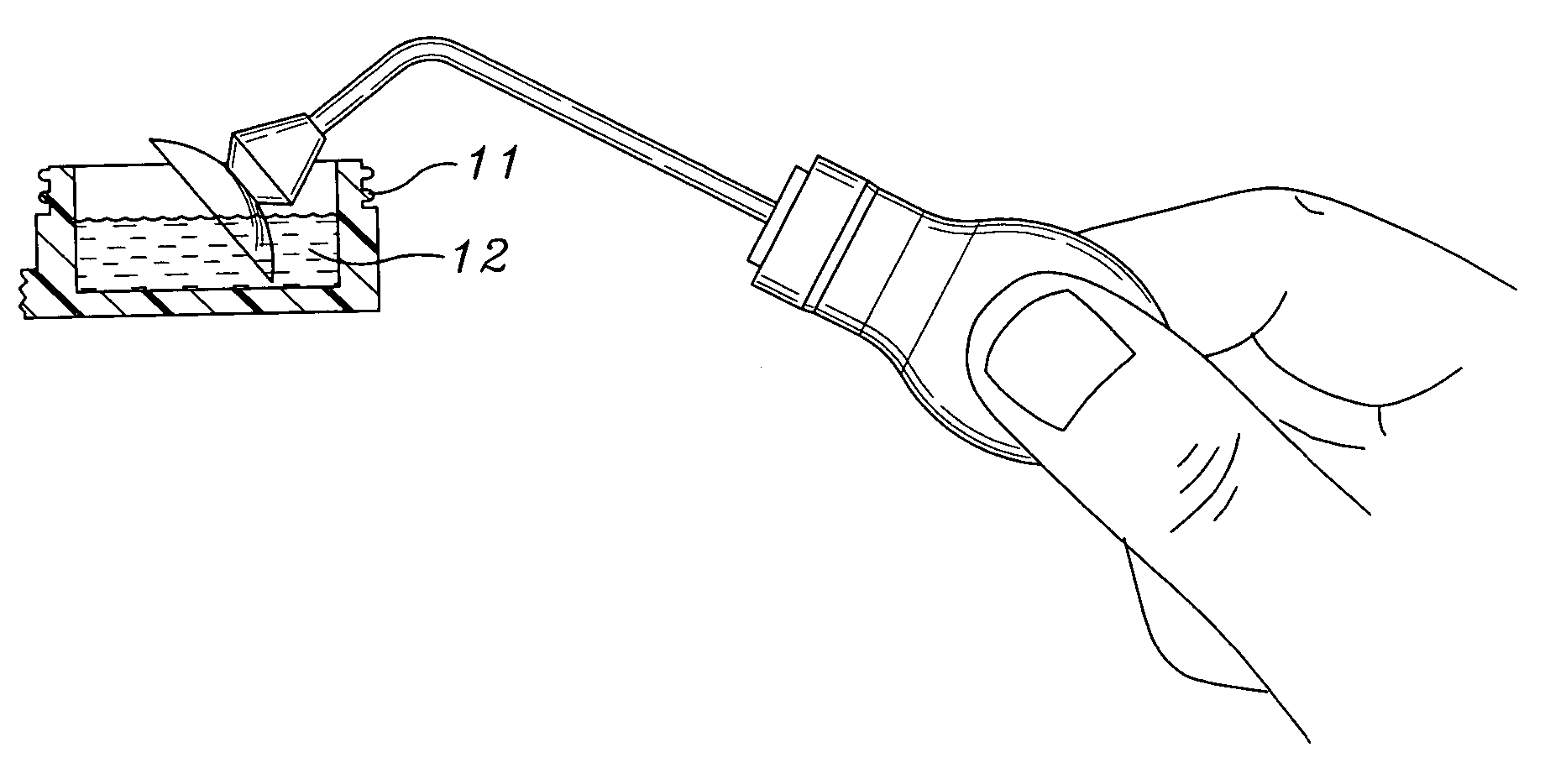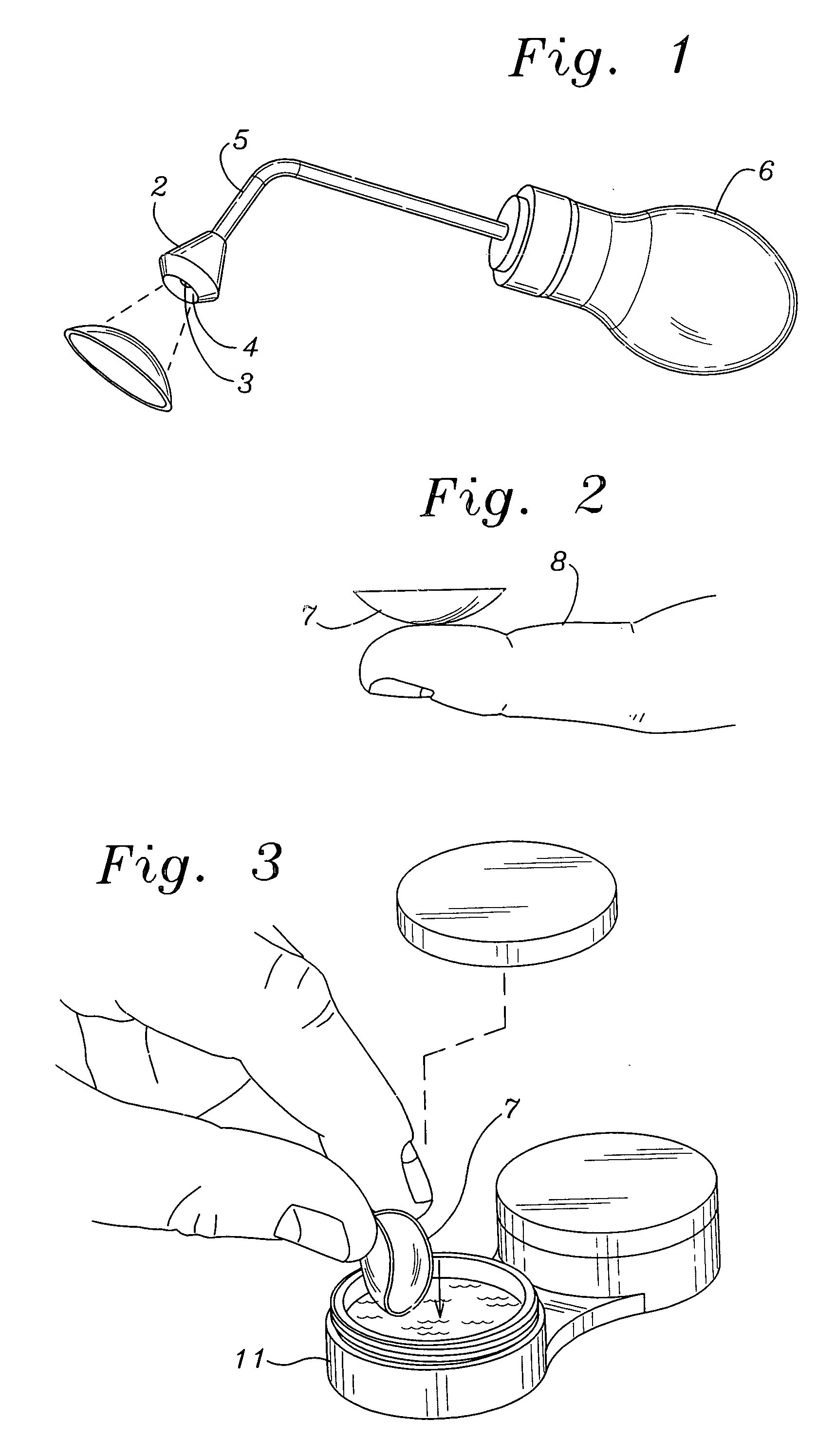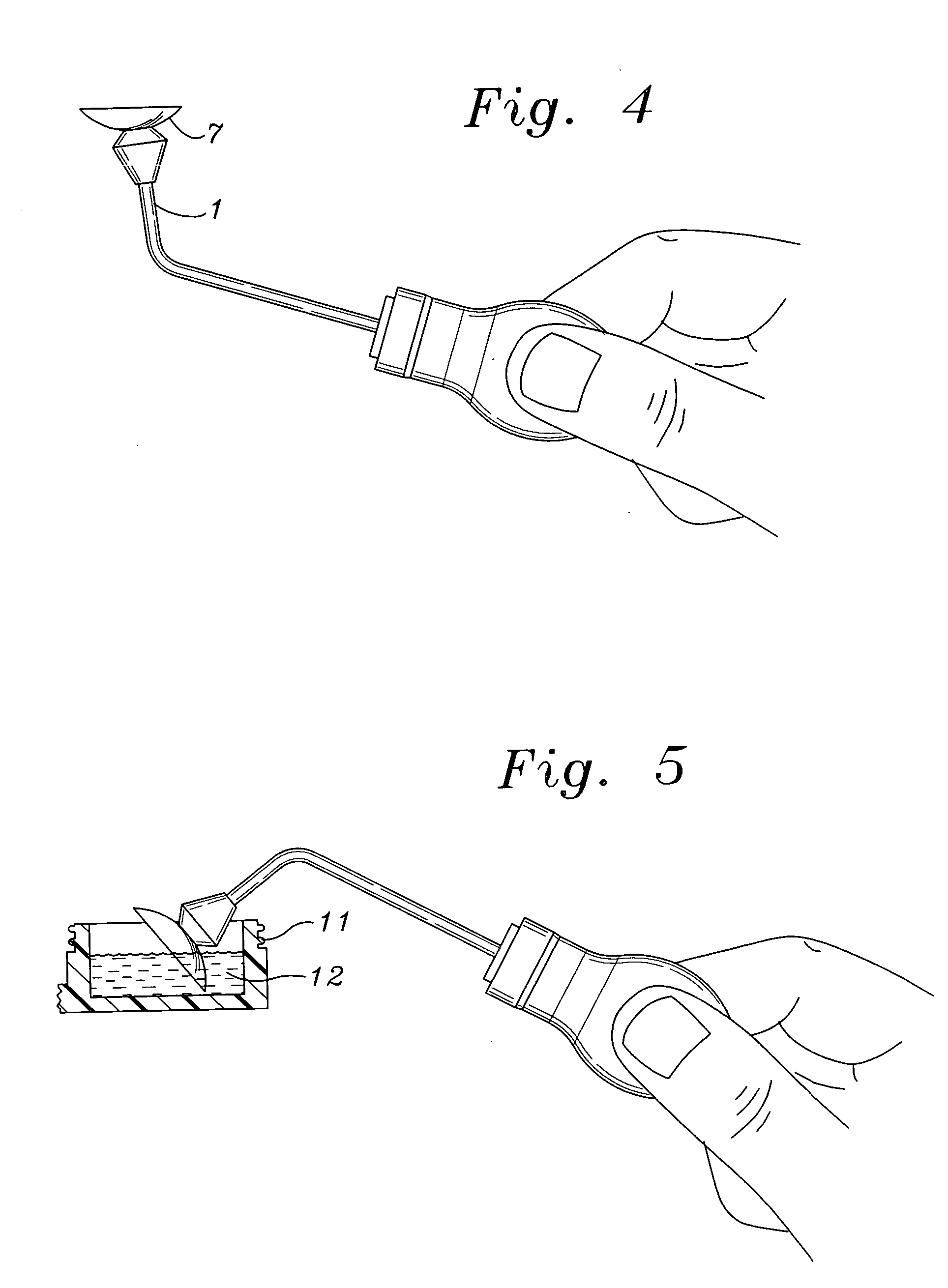Contact lens rinsing and placement process
a technology for contact lenses and rinsing, which is applied in the direction of cleaning with liquids, instruments, spectales/goggles, etc., can solve the problems of particles and oils which are transferred from fingers to contact lenses just prior to washing, and achieve the effect of increasing the symptom-free wear time and enhancing the initial comfort of the lens
- Summary
- Abstract
- Description
- Claims
- Application Information
AI Technical Summary
Benefits of technology
Problems solved by technology
Method used
Image
Examples
Embodiment Construction
[0010] The invention comprises a process of rinsing a contact lens 7 until it is free of visible debris and subsequently placing and releasing the lens on the eye without any intervening finger contact with the lens. In a preferred embodiment contact a lens placement instrument 1 is used, as shown in FIG. 1, comprising a contact lens holder 2 with a conical surface 4 which receives the contact lens 7. A hollow tube 5 with an air bulb 6 attached to an opposing end is attached to the contact lens holder 2. The air bulb 6 provides a puff of air to an air hole 3 in the comical surface 4 which releases the contact lens 7 after the lens 7 is seated upon the eye. The contact lens placement instrument 1 is claimed in pending patent application Ser. No. 10 / 405,364.
[0011] The contact lens 7 is removed from the lens case and is correctly oriented for placement, as in FIG. 2, on the user's finger 8. The contact lens 7 is then grasped on one side between the thumb and index finger, as in FIG. 3...
PUM
 Login to View More
Login to View More Abstract
Description
Claims
Application Information
 Login to View More
Login to View More - R&D
- Intellectual Property
- Life Sciences
- Materials
- Tech Scout
- Unparalleled Data Quality
- Higher Quality Content
- 60% Fewer Hallucinations
Browse by: Latest US Patents, China's latest patents, Technical Efficacy Thesaurus, Application Domain, Technology Topic, Popular Technical Reports.
© 2025 PatSnap. All rights reserved.Legal|Privacy policy|Modern Slavery Act Transparency Statement|Sitemap|About US| Contact US: help@patsnap.com



